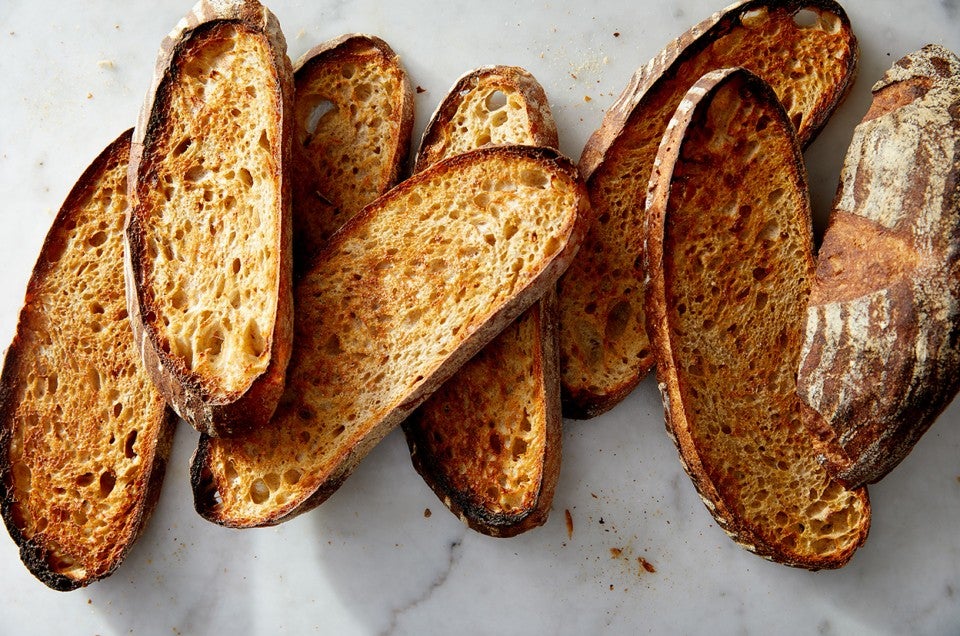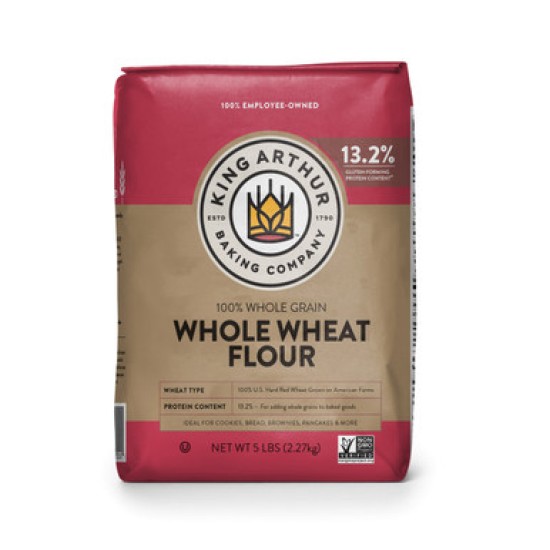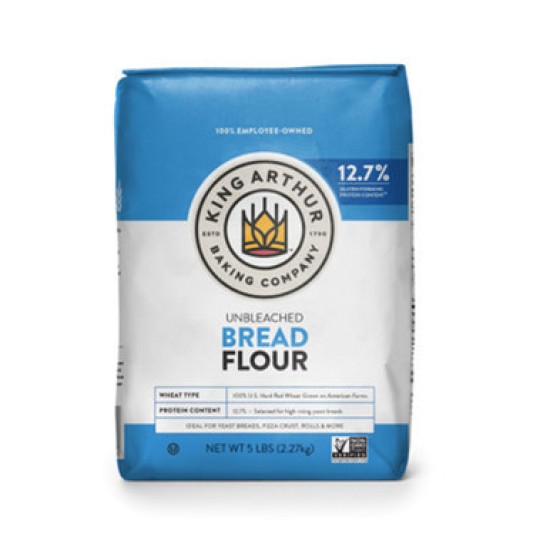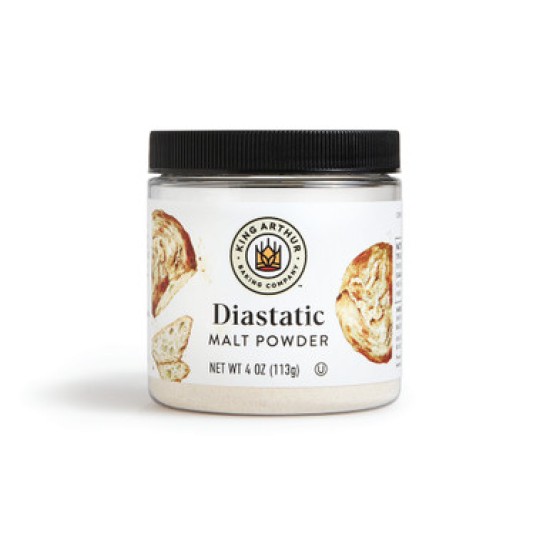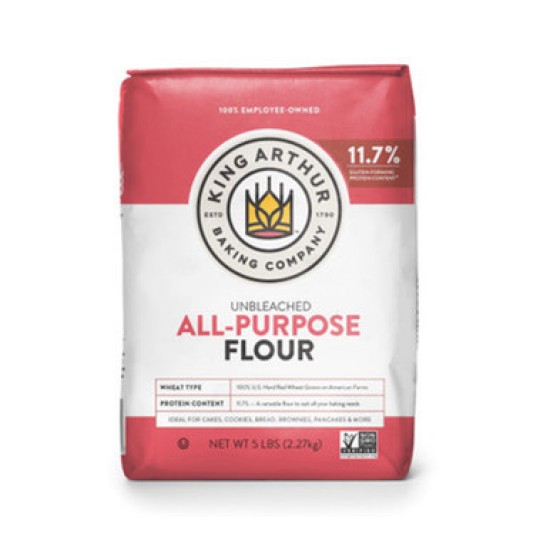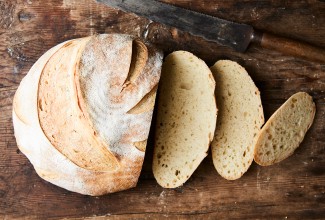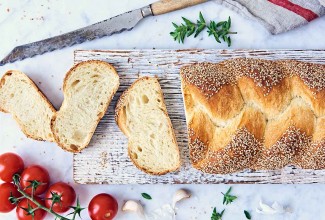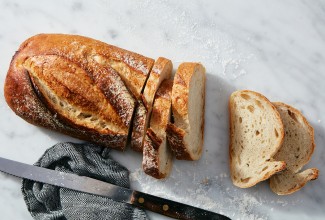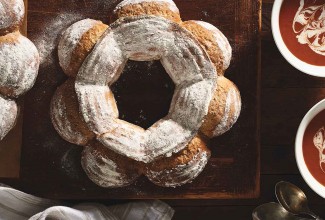-
Weigh your flours; or measure them by scooping them into a cup and sweeping off any excess.
-
Mix together all the ingredients in a 2-quart dough-rising bucket (or other transparent straight-sided container that’s at least 2 quarts in size) until all the flour is incorporated into a very wet, sticky dough. Cover the dough and set it aside in a cool place (68°F to 70°F is ideal) for 14 to 24 hours, until the dough has doubled and the top surface is bubbly and just slightly domed. If your container isn't marked, it’s handy to use tape to mark where the dough starts so that you can easily tell when it's doubled. The rise time will vary depending on how cool or warm your kitchen is. At 70°F, the dough should double in about 16 hours.
-
Once the dough has risen, place a baking stone in the middle of the oven and a shallow (but rimmed) oven-safe pan in the bottom. Preheat the oven to 475°F.
-
Turn the dough out onto a floured work surface. Lift up the quarter of the dough farthest away from you, and fold it into the center. Repeat this stretching and folding with the quarter of dough nearest you, then the left and right sides, in that order. Form the dough into a ball.
-
Let the dough rest, seam side up, for 10 minutes on the floured surface. You don’t need to cover it.
-
Take a small handful of flour and generously dust a brotform (lined for best release) or a towel-lined bowl.
-
Form the dough into an even tighter ball by stretching and folding the four quarters into the center again, then turning the dough over and rolling it gently between your lightly floured hands and a clean (unfloured) work surface.
-
Place the dough seam side up into the prepared brotform (or bowl); leave it uncovered. Let the dough rest until you see tiny bubbles on the surface. This should happen fairly quickly (within 30 to 60 minutes), depending on how warm or cool your kitchen is.
-
Turn the dough out onto a piece of parchment or a semolina- or cornmeal-dusted baking peel. Have a cup of water at the ready.
-
Slash the loaf several times, then transfer the bread to the hot stone. Wearing oven mitts, pour the cup of water into the hot pan beneath the stone and immediately close the oven door.
-
Bake the bread for 30 to 35 minutes, until it’s dark brown in color and a digital thermometer inserted into the center reads 207°F.
-
Remove the bread from the oven and transfer it to a rack to cool completely.
-
Store bread, loosely wrapped, at room temperature for several days; freeze for longer storage.
